Read next
The latest news, updates and expert views for ambitious, high-achieving and purpose-driven homeowners and property entrepreneurs.

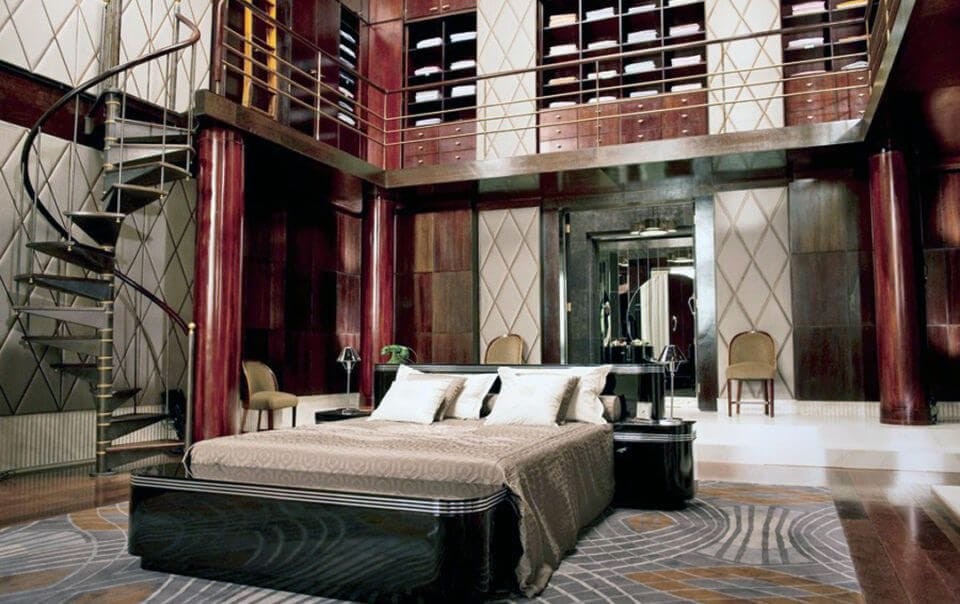
Have you wondered how to recreate an art deco interior design for your home?
Want to know more about design examples inspired by The Great Gatsby's style?
As you likely already know, art deco design came to life in the wake of the Great War, when the populations of Europe — devastated by the predations and privations of the time — yearned for a new way of life that brought fresh and exciting changes — changes that were desperately needed to break with the designs and lifestyles of the past.
The art deco movement sought nothing less than a complete overhaul of contemporary existence and, at the same time, looked to create stylish and daring designs combining both comfort and reliability. These bold principles were attractive to many that had seen the war pass, and also ushered in a new and exciting era of fashion and architecture that has stood the test of time.
To this day, the art deco style is seen as elegant and robust, whether its bold statements were used for interior design, architecture, fashion or vehicles, and has had a major impact on building the design with its incorporation of contemporary technology. With its distinctive aura of style and sophistication, art deco design has something of a timeless appeal.
Beyond that, with Baz Luhrmann's The Great Gatsby film, 1920s design nostalgia gained its popularity again, conveying the fun and elegance of the party scene and portraying the lavish, opulent nature of its protagonist, Gatsby.
In this article, we’ll show you 6 simple steps to transform your house into a Great Gatsby house by using art deco principles.
But first, some context…
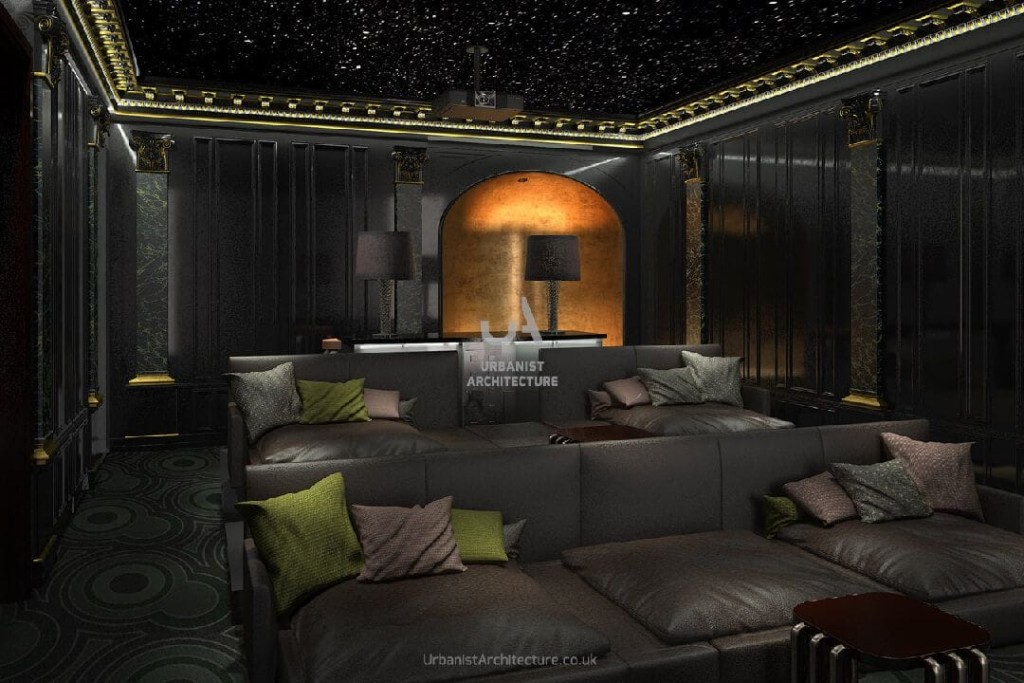
In order to provide some context, it’s important to define what we mean by art deco — for starters, the words ‘Art’ and ‘Deco’ simply mean Artistic in appearance and Decorative in intent, and although the style came about before the Great War it was known by its full French name, les arts décoratifs until the late 1960s.
Historian Bevis Hillier defined art deco as "an assertively modern style [that] ran to symmetry rather than asymmetry, and to the rectilinear rather than the curvilinear; it responded to the demands of the machine and of new material [and] the requirements of mass production" and was born of the optimism that followed the war period. The growth of travel helped art deco to become one of the truly international genres of decoration and architecture, and examples of the style can be seen around the world.
However, after the Second World War, it lost ground to the more austere International Style of architecture, which prized form and utility over decoration.
In contemporary Britain, as elsewhere, there is a movement away from the flat-pack, low-esteem, low-expectation beige faux-Scandi décor and furnishings. In recent years, homeowners have gravitated toward a more ostentatious atmosphere with greater use of colour and decoration.
Utilitarianism is fine for certain uses — a barracks for instance — but in our homes and places of sanctuary, we seem to prefer a greater degree of luxury and style. As such, the ornamental qualities of this timeless style have come back in favour in domestic architecture.
As accessible as the style is, there need to be certain considerations for a look to be really considered art deco, rather than just a mishmash of things thrown together. To help paint a picture, it's we can't help but refer to the 2013 Hollywood version of F. Scott Fitzgerald's 1925 literary classic, The Great Gatsby.
Baz Luhrmann's cinematic version of this literary classic uses interior design to evoke feelings of decadence and free-wheeling fun, and his interpretation of the period borrows art deco style to harken back to a time when society sought pleasure and escape from mundanity and austerity. As seen in the movie, in its time art deco was a movement in design that sought a sense of extravagance, glamour, vitality, and hope related to social and technological development.
In the film, you can find products that are both exclusively crafted items and mass-produced wares, with careful design being a common factor to both. In either instance, the specific purpose of the product is accentuated by a sleek form and a bespoke, aggressively modern elegance to signify luxury, wealth and sophistication. This attention to detail stands out in both the book at the film and represents the protagonists' desire to live beautifully, in the moment.
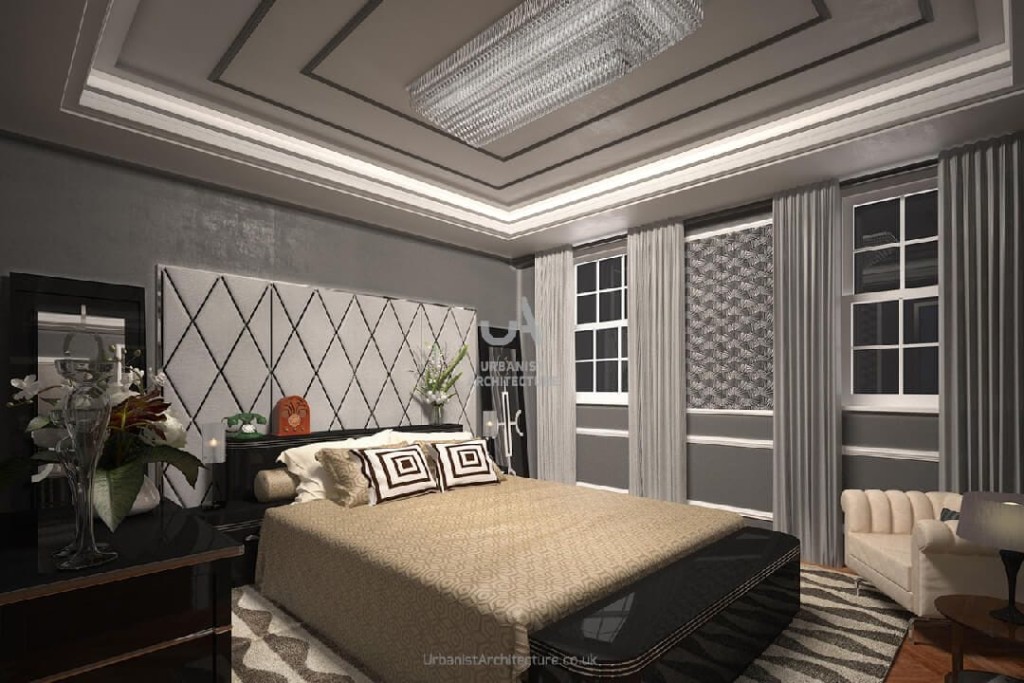
Now that we’ve mentioned some of the basic tenets of art deco design, let's discuss how to design your Gatsby House with art deco interiors. Pattern and colour are first on our list.
First things first: choose striking patterns. It is perfectly possible to create harmonious interior design with a variety of patterns, and you can either incorporate pattern liberally throughout each room with wallpaper or paint designs to put together a more diverse palette.
Similarly, you could relegate the patterns and motifs to a smaller, more designated area for a more minimalist look. Glossy surfaces can then be accentuated further using patterned cushions and a geometric trim on certain furnishing pieces – on a mirrored coffee table for instance.
Consistent geometric patterns with sharp angular points, parallel lines and marked symmetry are all hallmarks of this transformational design movement.
The art deco colour palette is as striking as it is bold, with contrasting deep and bright hues of yellows, reds, blues, greens, and pinks, all of which combine beautifully with silver, black and chrome to create that distinctive look.
However, if bright tones aren't your cup of tea, you can still achieve this type of decor with a softer palette, using creams and beiges in living rooms, dining rooms, and bedrooms. The key word here is contrast: these soft subtle colours must bring to the present-day a touch of old-school, traditional glamour, contrasting with the beautifully polished wood and lacquered furniture, which was common in that period. As part of this contrast, don't be afraid to use tones like maple, silver, brass, ebony or ivory, as these colours are the epitome of art deco.
It’s worth noting that the generous use of expensive metals, such as gold and stainless steel reflected the improved wealth of the period, which allowed many new industries to create art deco-inspired products.
As you can see from the picture above, art deco furnishings generally includes pieces with firm angular lines and rounded upholstered chairs, which are both comfortable and aesthetically appealing. The fine fabrics add to the sumptuous feel, enriched with striking blocks of colour and smooth geometric fabric patterns.
The key to choosing art deco furniture to look for pieces that are opulent, comfortable and pleasing to the eye. The carefully stylised lines of 1920s and 1930s technology such as aeroplanes, cars, ocean liners, and skyscrapers are often included along with geometricised natural shapes, such as seashells, flowers and sunsets. These are all key motifs that you should be keeping your eye out for when choosing your furniture.
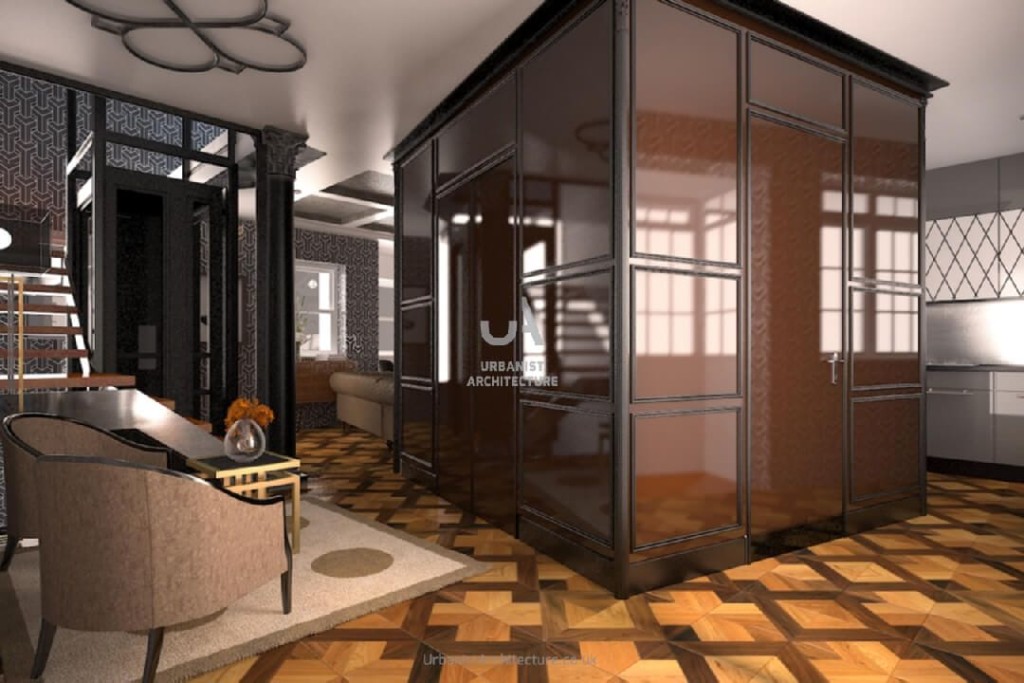
This one is simple — use mirrors, lots of mirrors! Whether they’re geometric or not. And wherever possible, use shiny silver or chrome frames to complement the mirrored/chrome touches of your furniture. The multiple reflections and ambiguity of mirrors, together with fine-tuned lighting, are an essential part of art deco interior design schemes.
As you can see in the images throughout this article, subtle, appropriate lighting in combination with the mirrors is often used to accentuate art deco furnishings. Typical of the style are decorative wall lights, stylised table lamps or figurines holding lamps high above their heads, while zig-zag and geometric forms are used for ceiling fixtures.
When it comes to art deco homes, fireplaces are very much in fashion. Again, as with the other features, fireplaces should be very angular with green, pink and beige tiles, adding a pop of colour to the home.
Recognised by their gleaming and high-shine finishes, art deco materials look handsome in any room, and those used are not run-of-the-mill: metallics are in for furnishings, with fabric and glass commonly employed as well as the famously liberal use of chrome accents.
Moving away from wall coverings now, parquet flooring is one of the main elements of art deco as is it highly polished and decorative, but non-slip, allowing the richness of the wood to shine through. Similarly linoleum – including lino-tiles with abstract designs or chessboard patterns – is very ‘in’. To break up the starkness of large expanses of parquet flooring, rugs can be used. Bear in mind that to match the rest of the style, you're looking for geometric patterns, and handmade by high-quality rug makers.
In terms of finishes, think glamour: gold leaf, high-gloss lacquer and geometric marquetry are all characteristic of this revolutionary style. As art deco design is always done as a synthesis of disciplines, furniture is combined with sympathetic carpeting and matching wall coverings, and easily integrates decorative items, such as objets d'art and antique furniture.
When designing your Gatsby house, you’ll have to put a lot of thought into your living spaces – most notably, the living room and bedroom.
When it comes to art deco interior design, living rooms usually require the most attention because that's where people spend most of their free time. Typically these rooms will contain comfortable sofas and armchairs, which as a rule, should be unfussy and instead focus our attention on the quality of their natural upholstery. You’ll also need to make decisions about layering different types of luxurious products, such as handcrafted rugs and carpets or even silk or velvet curtains. Likewise, you’ll need to go for elegant light fixtures, carefully chosen to match the ambience of the living room.
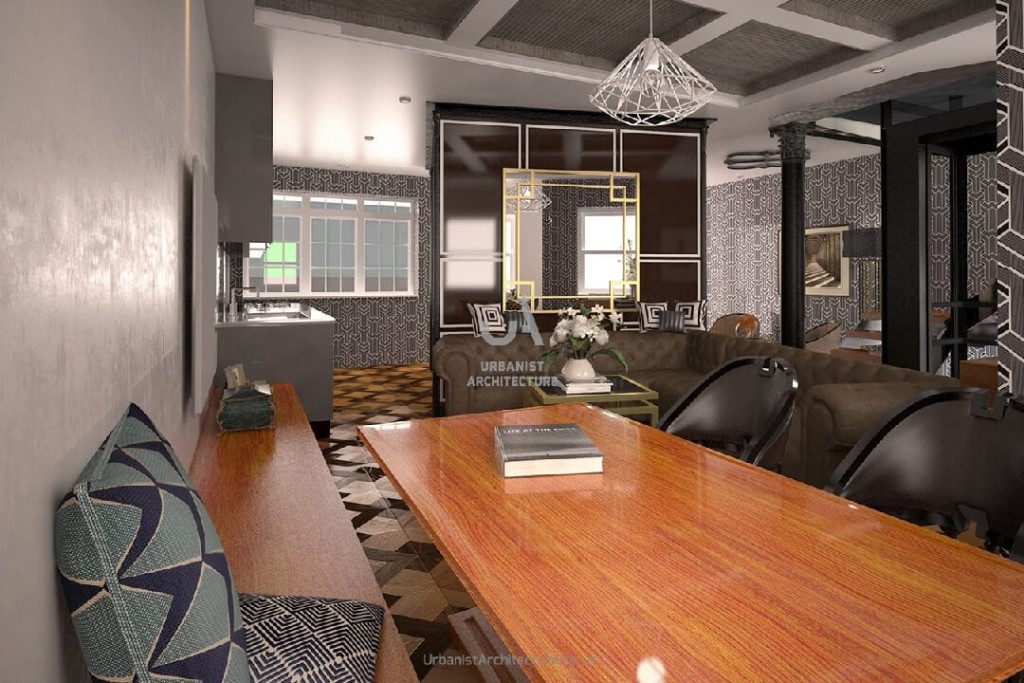
Then, of course, there is the question of the bedroom. Like the living room, the sleeping quarters should be luxurious, cosy and comfortable. A rich colour scheme should be complemented by flamboyant accessories, handcrafted/bespoke lamps and a careful selection of textiles to really set the art deco style off. Curtains with drapes will add a sumptuous touch and help frame your window. If you really want to go overboard, use silk or satin pillows and blankets to really set off your opulent look.
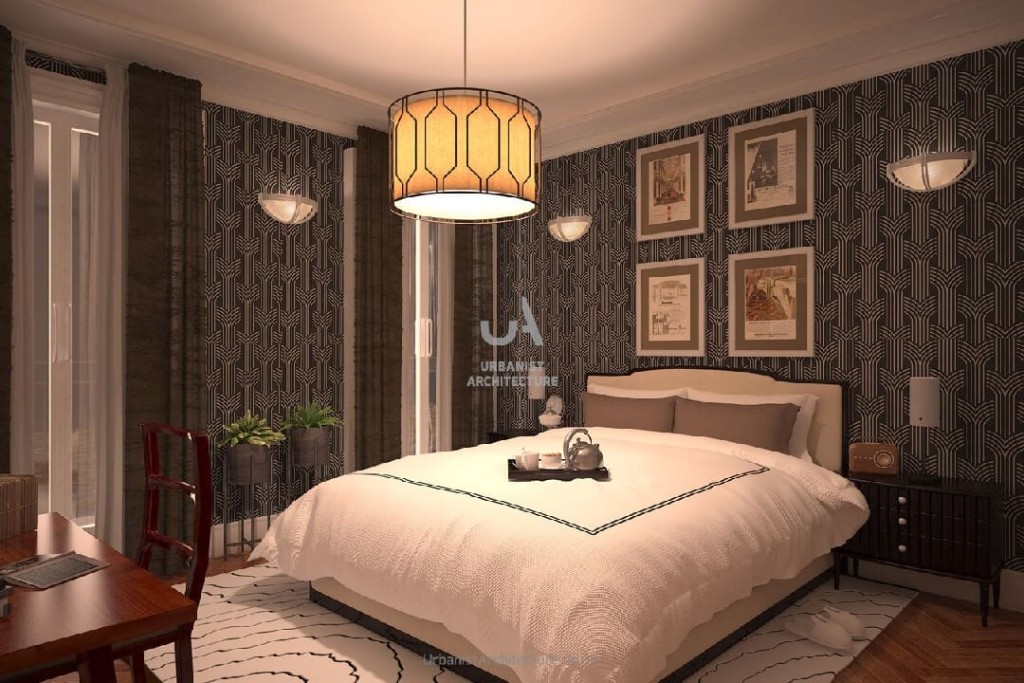
An art deco house isn’t for everyone...
It is a movement that tends towards strong design, with a rich stylistic boldness that is unmatched by more modern, less detail-oriented décors. Opulent, striking, and splendidly comfortable, art deco design works perfectly for 21st-century homes, where this statement style exudes supreme confidence. Even if you don't feel like a strict art deco look is for you, some elements and principles of the design can certainly be incorporated into a more contemporary style to add some chic glamour to your home.
At Urbanist Architecture, art deco design is one of our favourites, as we seek innovative ways to create detail-oriented interiors and a comfortable lifestyle for our interior design clients. With a team of architects, interior designers, planners and structural engineers, we are ready to help take your property to the next level.

Ella Macleod BA, MArch is a solution-focused architectural designer who brings a thoughtful balance of creativity and practicality to every project. Valued for both her natural design talent and her ability to foster authentic relationships, she is quickly establishing herself as a rising talent in the architecture industry.
We look forward to learning how we can help you. Simply fill in the form below and someone on our team will respond to you at the earliest opportunity.
The latest news, updates and expert views for ambitious, high-achieving and purpose-driven homeowners and property entrepreneurs.
The latest news, updates and expert views for ambitious, high-achieving and purpose-driven homeowners and property entrepreneurs.



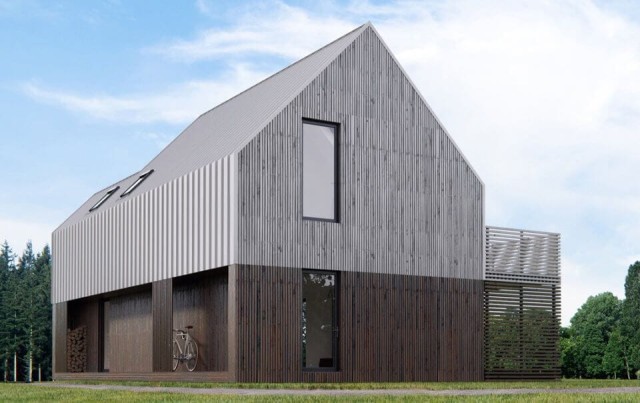





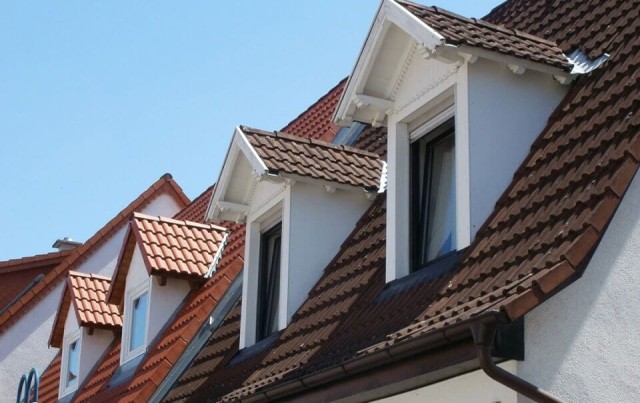
We specialise in crafting creative design and planning strategies to unlock the hidden potential of developments, secure planning permission and deliver imaginative projects on tricky sites
Write us a message